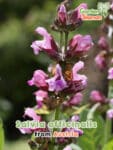- Introduction
- The importance of beneficial insects in the ecological balance of the garden
- Guide to attracting beneficial insects to your garden
- How to create special shelters for beneficial insects
- Case studies: Successful integration of beneficial insects in the garden
- Conclusion
1. introduction
Beneficial insects in the garden play a crucial role in ecological balance and pest control. Their presence not only supports the health of plants and soil, but also contributes to pollination and natural pest control. From bumblebees that carry pollen from flower to flower, to hedgehogs that feed on pests, to bats and birds that keep insect populations in check, each of these helpers plays an indispensable role. Yet they are often inconspicuous guests in our gardens, whose contribution to biodiversity and plant health is immeasurable.
In this article, we look at how you can attract beneficial insects and other helpers to your garden through targeted measures. Strategies for creating beneficial insect-friendly habitats are presented, from the construction of special shelters such as insect hotels and hedgehog houses to the selection of suitable plants that provide nectar and pollen. We also look at how avoiding pesticides and creating natural hiding places and food sources can help to promote a healthy ecosystem in your own garden. Case studies provide insights into successful projects integrating beneficial insects, and we conclude by summarizing the key points for establishing the garden as a haven for these essential helpers.
2. the importance of beneficial insects in the ecological balance of the garden
Beneficial insects in the garden make gardeners' work easier and are a good way of practising sustainable and organic plant protection. These often small animals drive away pests, ensure a larger harvest or improve the soil structure. Their role in the garden is diverse and irreplaceable for the ecological balance.
Definition and types of beneficial insects
Beneficial insects are animals and insects that can help with gardening: They fight pests and help plants to thrive. The best-known beneficial insects include bumblebees, bees, spiders, hedgehogs, threadworms and blue tits. These creatures provide helpful "services" for the home and garden by exhibiting behavior that is beneficial to humans.
The role of beneficial insects in natural pest control
Beneficial insects play a crucial role in natural pest control. They keep pests in check and ensure the pollination of our crops. Ladybugs, for example, destroy aphids that infest the leaves of various ornamental and crop plants by eating them. The larvae of lacewings feed mainly on aphids and are now specially bred as beneficial insects for biological plant protection. Hedgehogs have a preference for snails and grubs, which often nibble on grass roots.
Contribution to pollination and soil improvement
In addition to pest control, beneficial insects make a significant contribution to pollination and soil improvement. Bees and bumblebees are responsible for pollinating almost 70 percent of all crops. Without them, our gardens would look bleak and our plates would be much emptier. Earthworms loosen the soil structure, which means that the soil is better aerated and can store more water. Earthworms also use their excrement to produce worm humus, which is very rich in nutrients and makes a good fertilizer.
Through pollination, pest control and soil improvement, beneficial insects play a major role in a functioning ecosystem. A garden without beneficial insects would quickly be overwhelmed by pests, and the harvest from fruit trees and vegetable gardens would largely fail to materialize. It is therefore essential to encourage beneficial insects and protect their habitats to ensure a healthy ecological balance in the garden.
3. instructions for attracting beneficial insects to your garden
Choosing the right plants
To attract beneficial insects to the garden, the selection of suitable plants is crucial. Native wildflowers such as marigolds, cornflowers and various umbellifers not only provide nectar and pollen, but also ideal living conditions for insects such as ladybugs and parasitic wasps. Plants that flower over a long period of time and therefore provide a continuous source of food are particularly attractive.
- Wildflowers and herbs: Wild herbs and unfilled flower species are particularly useful as they provide easily accessible nectar and pollen.
- Early bloomers: Plants such as willow and crocuses are important for bumblebees, which become active early in the year and look for food.
- Umbelliferae: Plants such as yellow yarrow and greater angelica specifically attract parasitic wasps, which in turn can control pests in the garden.
Creation of habitats and winter quarters
Beneficial insects not only need food, but also suitable habitats and places to hide in order to settle permanently in the garden. By providing natural habitats such as dead wood, piles of leaves and stone walls, you can create valuable retreats.
- Dead wood and piles of leaves: These natural elements provide ideal hiding places and hibernation opportunities for many beneficial insects, including hedgehogs and various species of insects.
- Insect hotels and nesting boxes: Such structures support the colonization of beneficial insects such as earwigs, ladybugs and various bee species.
- Natural design: Avoid excessive garden cleanliness. For example, leave dead plant stems standing over the winter, as many insects hibernate in them.
Avoidance of chemical pesticides
Avoiding chemical pesticides is essential to promote a healthy population of beneficial insects in the garden. Chemicals not only kill pests, but also the beneficial helpers.
- Biological alternatives: Use natural pest control methods and biological pesticides that are specially designed to protect beneficial insects.
- Healthy plant culture: Make sure your plants have the right site conditions and proper care to make them more resistant to pests.
- Mechanical protective measures: Use physical barriers such as fleece or protective netting to protect plants from pests without endangering beneficial insects.
By integrating these measures into garden maintenance, you can create a lively and beneficial insect-friendly garden that not only promotes biodiversity but also contributes to natural pest control.
4. how to create special shelters for beneficial insects
Building an insect hotel
Insect hotels are a great way to attract beneficial insect species such as wild bees, ladybugs and lacewings. These small structures provide shelter and ideal nesting conditions. To build an insect hotel, you need planed wooden boards, slate slabs and galvanized wire mesh. The subdivision into small compartments makes it possible to meet different nesting requirements. Filling materials such as thinner branches, wood wool and straw create a variety of nesting possibilities. It is particularly important to position the insect hotel so that it is protected from the wind and receives plenty of sunlight.
Installation of hedgehog houses and bird nesting boxes
Hedgehog houses not only provide protection during hibernation, but also serve as safe nesting sites. They should be made of untreated wood and free from sharp edges. A removable, weather-resistant roof makes cleaning easier. The ideal size for a hedgehog house is around 40x30x25 cm. For bird nesting boxes, it is important that they are placed in a sheltered location to protect the birds from predators and bad weather. Materials such as wood and a small opening help to specifically support the bird species that are native to the region.
Creating oases for butterflies and wild bees
Butterflies and wild bees benefit enormously from specially designed habitats. Overgrown garden areas under bushes or along fences offer ideal conditions for butterfly larvae. A simple pile of wood can be enough to attract wild bees, which find ideal conditions for their nests there. To support butterflies over the winter, it is helpful not to remove leaves or coniferous branches, as some species hibernate there. Special insect hotels with various compartments containing small branches or dry leaves can also be set up to help butterflies overwinter.
5. case studies: Successful integration of beneficial insects in the garden
Ladybugs for controlling aphids
Ladybugs, especially the two-spot ladybug, have proven to be effective natural controllers of aphids. Research shows that releasing ladybug larvae in the spring and fall can significantly reduce aphid populations. What is particularly interesting is that ladybug larvae need to be released per aphid to ensure effective control. However, working with ants can be a challenge as they protect the aphids. The use of physical barriers such as glue rings can prevent ants from interfering with the effectiveness of the ladybugs.
Useful predatory mites against spider mites
Predatory mites, such as Phytoseiulus persimilis and Amblyseius californicus, are excellent examples of the use of beneficial insects for pest control. These predatory mites eat spider mites and their eggs, which leads to a rapid reduction in the spider mite population. Predatory mites are particularly effective in protected growing environments such as greenhouses, but can also be used outdoors if they are applied early. Predatory mites should be applied at the first sign of an infestation in order to achieve optimum results.
Promotion of wild bees and butterflies
Wild bees play a crucial role in the pollination of cultivated and wild plants. To promote the diversity of wild bees, it is important to create suitable nesting sites and a continuous supply of food. This can be achieved by selecting plants with unfilled flowers and creating wildflower areas in the garden. In addition, wild bees should be supported in nesting by providing unvegetated, sandy patches of ground or woody stems for laying eggs. Avoiding the use of pesticides is also essential in order not to endanger the health of wild bees.
These case studies show how effective pest control and the promotion of biodiversity in the garden can be achieved through targeted measures and the use of beneficial insects.
6. conclusion
The importance of beneficial insects in promoting a healthy ecological balance in our gardens cannot be overestimated. By taking targeted measures to attract these useful helpers, such as designing beneficial insect-friendly habitats, avoiding chemical pesticides and creating special shelters, we can sustainably strengthen the diversity and health of our garden ecosystems. These strategies not only contribute to effective pest control, but also support essential processes such as pollination and soil improvement.
The solutions and case studies presented make it clear that every garden owner can make a valuable contribution to promoting biodiversity and supporting beneficial insects. Conscious decisions and simple changes in garden design can create an environment that is inviting and supportive for both humans and beneficial insects and animals. In doing so, we not only show respect for nature, but also invest in a vibrant and healthy future for generations to come.
Further questions and answers about beneficial insects
1. what attracts insects to the garden?
To attract insects to the garden, you can lay damp loam, clay or loess on an open area of ground or place it in a planting tray. These materials serve as valuable building material for many insects. In some gardens, it is also sufficient to use the natural loamy soil.
2 What are the advantages of beneficial insects in the garden?
Beneficial insects are not only important for pollination, they also fulfill other essential functions in the garden. They eat harmful insects that could damage plants, help to create new habitats through their pollination work, contribute to soil improvement and help to prevent plant diseases.
3. which plants are particularly attractive to ladybugs?
Ladybugs are attracted to natural gardens, especially beds with native herbs such as chives, chamomile or dill. They also like flowers such as yarrow, marigolds and cosmos.
4. which insects are beneficial for a healthy garden?
The following insects are particularly useful for your garden: bees, hornets, bumblebees, dragonflies, lacewings, ladybugs, earwigs and predatory bugs. These insects contribute significantly to the ecological health and balance of your garden.












